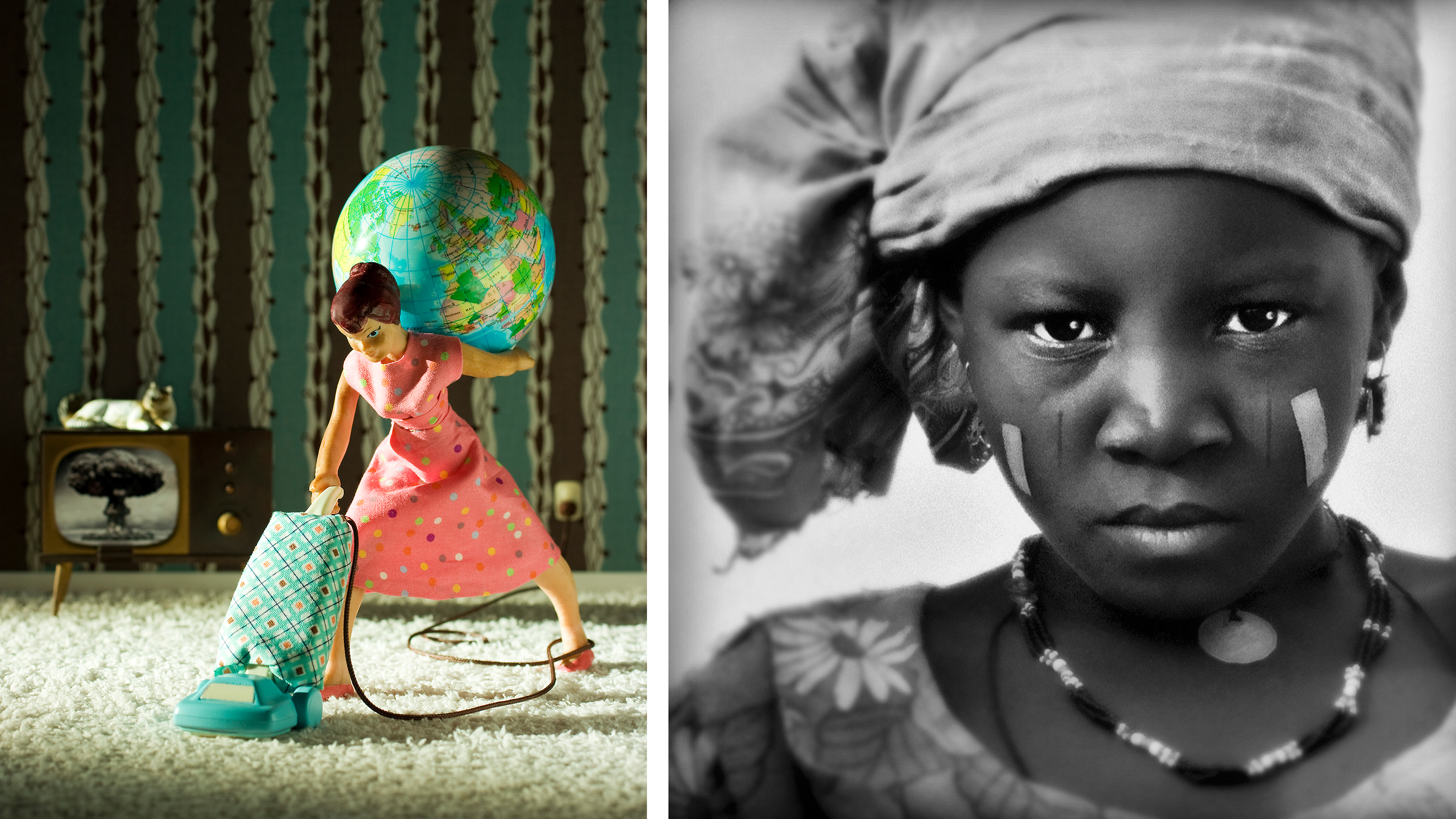DJI Mini 2 vs Mavic Mini: Which ultra-light drone should you buy?
DJI has more than one Mini… DJI Mini 2 vs Mavic Mini – they’re both the right weight, but which has the features for you?
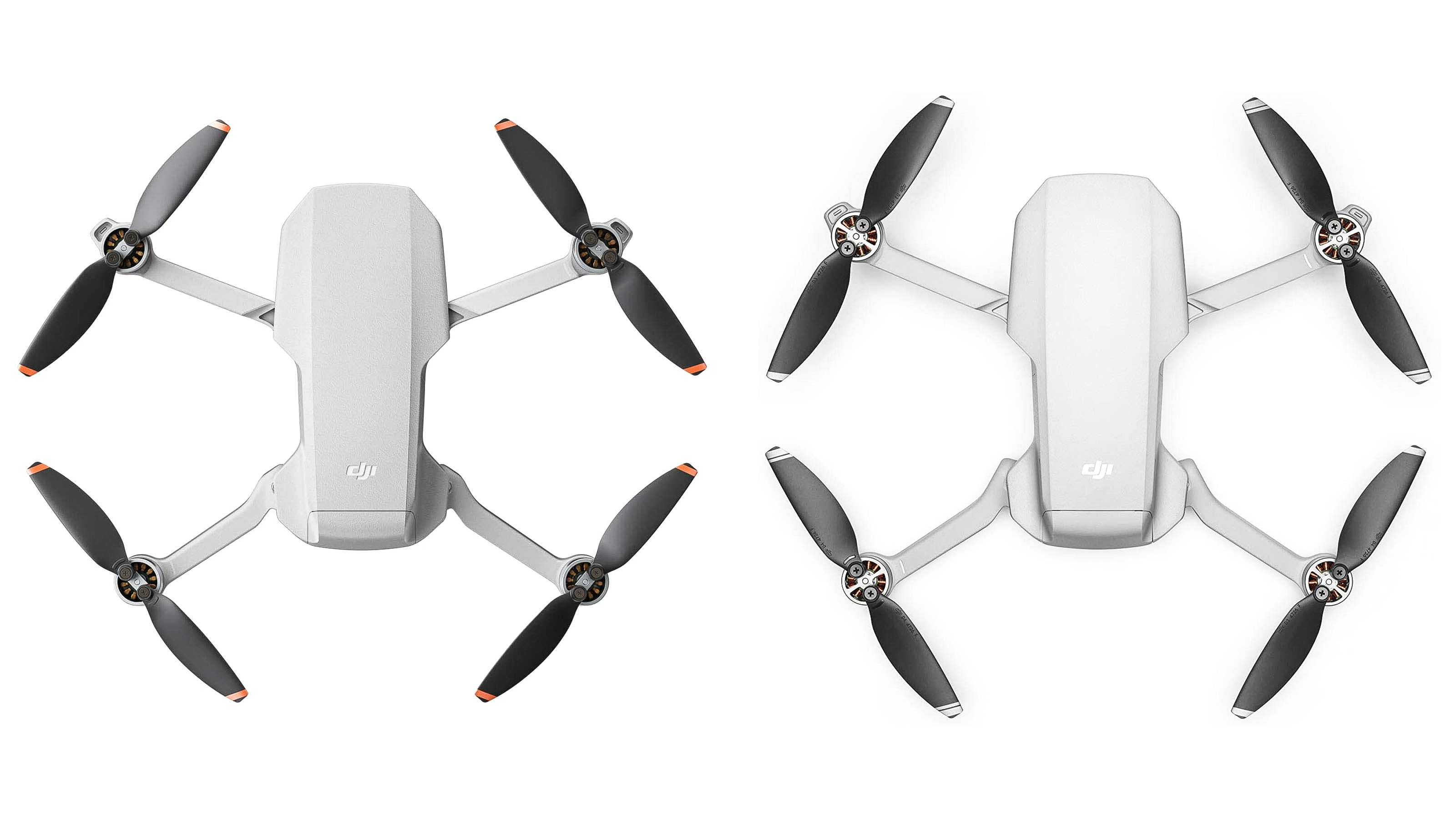
In this DJI Mini 2 vs Mavic Mini comparison guide we help you pick the best drone option from last year's best-selling drone and its more expensive successor – and help you find the best prices on these must-have beginner drones.
The 2019 Mavic Mini represented a marked change for DJI. It wasn’t the first time they’d reached out to mainstream consumers, but it definitely seemed the most completely successful presentation of a product which could be an aspirational Christmas gift or a useful creative’s accessory.
If you’ll forgive a brief history lesson, the product DJI had put out for that market before was the DJI Spark. That drone went to what might be seen in retrospect as a little too much effort to flag itself as an entry level, ‘easy-to-use’ and ‘fun-to-fly’ product, but at 300g came along when it was starting to become clear that it’d be overweight for regulators who were looking to make pilots register drones weighing over 0.55lbs or 250g. Users were also less excited by the ‘Jedi mode’ gesture controls which YouTube influencers discussed at length than they were irritated by the fact that the remote control was an optional paid-for extra.
That’s why the DJI Mavic Mini already had something to prove back in 2019, which it did with aplomb. The Mavic Mini brought a 3-axis gimbal, excellent video, 12-megapixel stills, 30 minutes of flight time and a ‘real’ radio control for a reasonably accessible price point. Of course we live in an age of online grumbling, and there were areas of legitimate concern about the Mavic Mini’s features too, but in truth these mostly came from people who didn’t understand the economics of drone design.
Nevertheless, DJI felt the need to provide a new model with improved camera, software, motors, and controller for the 2020 holiday season, for a price hike of $50 / £50 UK.
The new DJI Mini 2 (yes, it’s lost the moniker Mavic for some reason) brings some features from slightly further up the range, but of course the still-pretty young Mavic Mini can be picked up for some handy prices right now, so the question is, which sub-250g drone should you pick?
See also DJI Mini 2 vs Mavic Air 2
DJI Mini 2 vs Mavic Mini: Build & Design
Why you can trust Digital Camera World
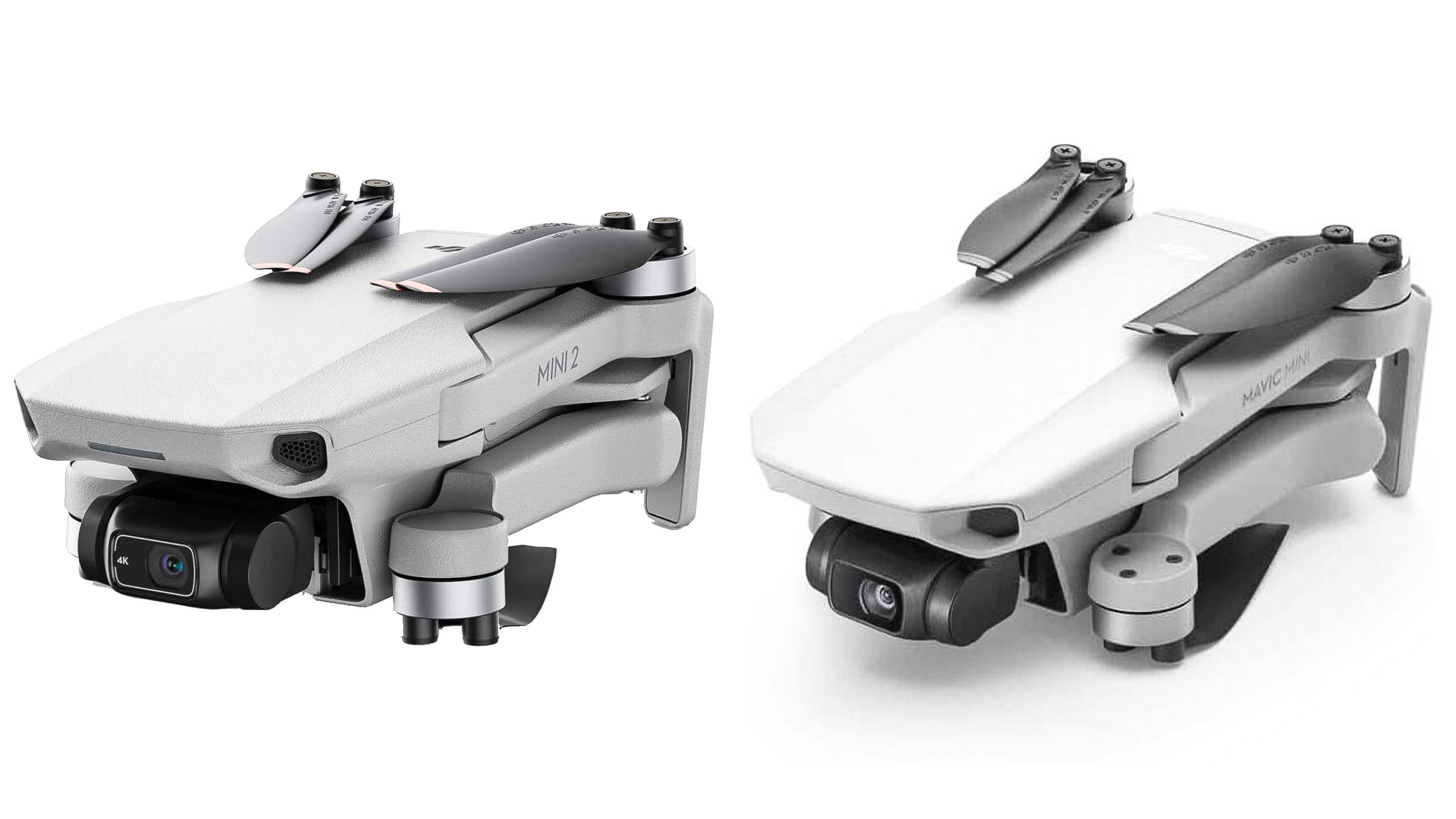
| Row 0 - Cell 0 | DJI Mini 2 | DJI Mavic Mini |
| Take-Off Weight | 249g | 249g |
| Size | 159 x 203 x 56mm | 160 x 202 x 55mm |
| Folded size | 138 x 81 x 58mm | 140 x 82 x 57mm |
| Diagonal span | 213mm | 213mm |
| Sensors | Forward + Downward | Downward |
Not a lot of variance between the Mini 2 and its predecessor when it comes to the design. Some of the measurements seem to be 1mm different to their counterparts, but the crucial take-off weight remains the same (the drone itself is an even more slight 242g). We also know both devices use a good number of the same accessories, which begs the question “Have the sizes changed, or the person rounding the measurements?”.
A closer examination reveals a few changes to the airframe. There is a new light on the front, which can adopt a wide range of hues. Other visual changes are the addition of a 4K logo on the front of the 3-axis gimbal, and the aforementioned disappearance of the word ‘Mavic’ from the arm (don’t worry though, there is a ‘2’ if you need to brag).
In design terms, the folding process is – after a couple of goes getting used to the sequence – pretty straightforward and forgiving. There’s no getting round the fact of front legs opening first and closing last though. It’s a pity that DJI’s patent battle woes mean the new version repeats the screw-on propellors but the centripetal force folding actually works just fine and both Minis have a screwdriver in the box, so it is rarely an issue (though in both cases it’s also an argument in favour of a case with good pockets, which might be seen as nudge in the direction of the Fly More kit).
DJI Mini 2 v Mavic Mini: Speed & Maneuverability
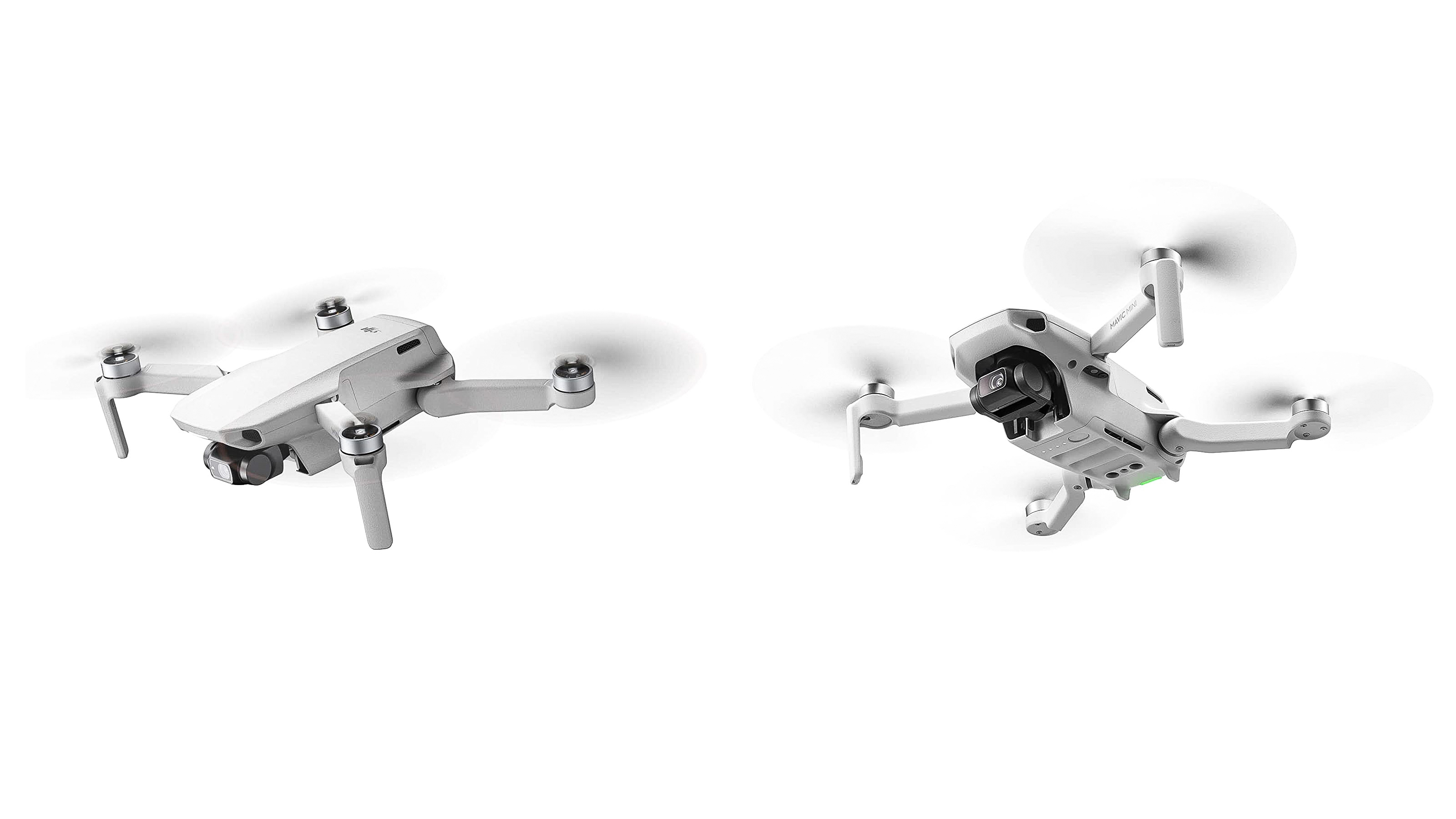
| Row 0 - Cell 0 | DJI Mini 2 | DJI Mavic Mini |
| Horizontal Speed | 16 m/s | 13 m/s |
| Ascent Speed | 5 m/s | 4 m/s |
| Descent Speed | 3.5 m/s | 3 m/s |
| Maximum wind resistance | 10.5 m/s | 8 m/s |
The flight characteristics of a drone are important, but difficult to summarize solely in charts of meters per second because the way quadcopters feel in the pilot’s hands depends a great deal on how the device interprets input from the control, which, in turn, depends both on the quality of the software in the drone and the hardware it has available to it. For example, try as it might, a drone without GPS or altitude sensors will have a much harder task of maintaining a level hover, but if those features are available you still need the developer to have chosen to make use of them!
Luckily for this comparison, DJI are reasonably consistent. Both drones have three modes – S, Sport, is the fastest, with a medium option (N or P) better suited for everyday flying, and a Cinematography mode which drops speed to levels which would suit moviemakers. The significance of a faster Sport mode is not necessarily that you’ll be using your aircraft flat out all the time, but that the motors are capable of doing so (which implies more power).
See also • DJI Mini 2 review • DJI Mavic Mini review
Another valuable physics lesson which might not be immediately obvious is the surprisingly slow descent speeds. You might wonder why this needs to be any less than the reasonably high lick gravity would cheerfully provide if the propellors stopped turning. In practice, descent (which involves slightly reducing the speed of propellors) has a tendency to introduce instability. Since the propellors combat that instability with slight individual speed adjustments in each corner then descent, with slower turning props, makes this process slightly harder to achieve. It’s essential that the aircraft remains upright, so the props point downward and do their work, so the whole control system needs to take a ‘better safe than sorry’ approach. Conversely the rotation of the props during ascent has a slightly self-correcting effect, so can be quicker.
Horizontal flight is achieved by leaning the drone so that a proportion of the down-jet from the props is directed horizontally behind the aircraft. It needs to lean the other way to push against the momentum, before returning to a level hover again. This is what the on-board gyroscopes and computer handle, and explains why you don’t yourself need to control the thrust of each propellor manually. Interestingly the software in the Mini 2 is programmed to detect strong winds and, if appropriate, allow tilt angles up to 40˚ to compensate for them even if not flying in Sport mode. With the Mavic Mini, it’s necessary to switch to Sport to get the strongest horizontal motion.
DJI Mini 2 v Mavic Mini: Battery Life
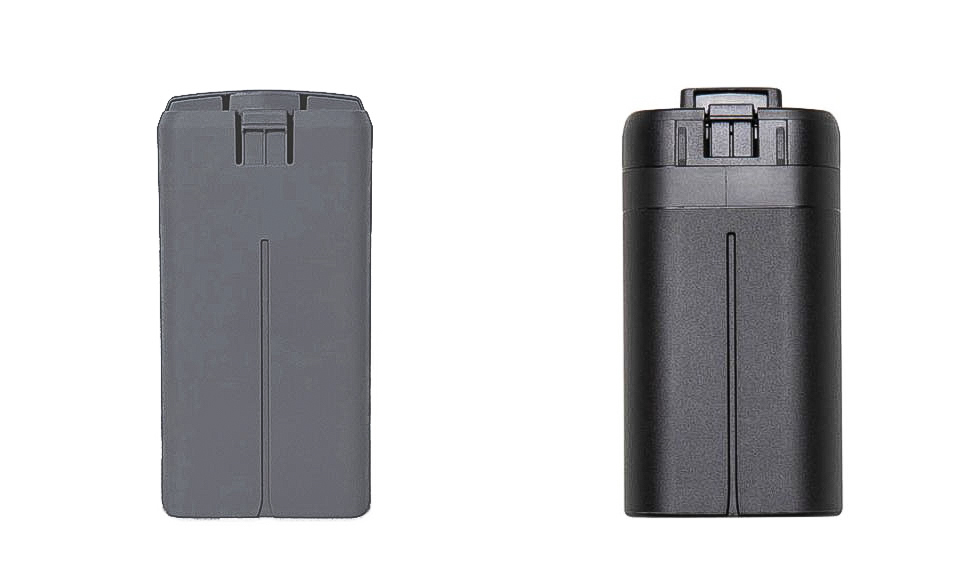
DJI Mini 2 Flight time: 31 mins
Mavic Mini Flight time: 30 mins
Many drones have so-called “intelligent Flight Batteries,” including DJI’s pricier models, and these benefit from built-in one-press charge meters. As it happens, the firm ditched this approach with the original Mini, opting instead to put the meter part of the airframe instead. The Mini 2 retains this approach with very similar (but technically different and not compatible) batteries. In both cases there is a button on the bottom of the drone, next to four white LEDs. These provide a crude histogram of remaining battery strength, or a ‘charging’ animation, for the battery in the drone – so nearly as good as one on the battery, but simpler and cheaper to make.
Charging the Mini 2 or the Mavic Mini is the same – the back of the drone features a USB-C connector which can be connected to, for example, your phone charger. Yes, there’s a certain irony that phones might be about to lose charging cables, but socket is a lot lighter than a wireless charging coil, so DJI appear to have made the right choice.
Charging in the drone keeps costs down, leaves less to carry, and still takes under 2.5 hours, but if you pay for the Fly More kit, you’ll get a Charging Hub, an optional accessory which can charge up to three batteries in sequence straight from the mains or be used as a bower brick to top-up your phone. The hub and the batteries are very similar on the Mini 2 and Mavic Mini, though the 2020 models are both grey rather than black, and have actually dropped from 2,400mAh capacity to 2,250mAh. There’s a good reason though: the newer batteries are still LiPo 2S but only 86.2g rather than the 100g 2019 models, and can accept 29W charge (5W more).
DJI Mini 2 v Mavic Mini: Gimbal
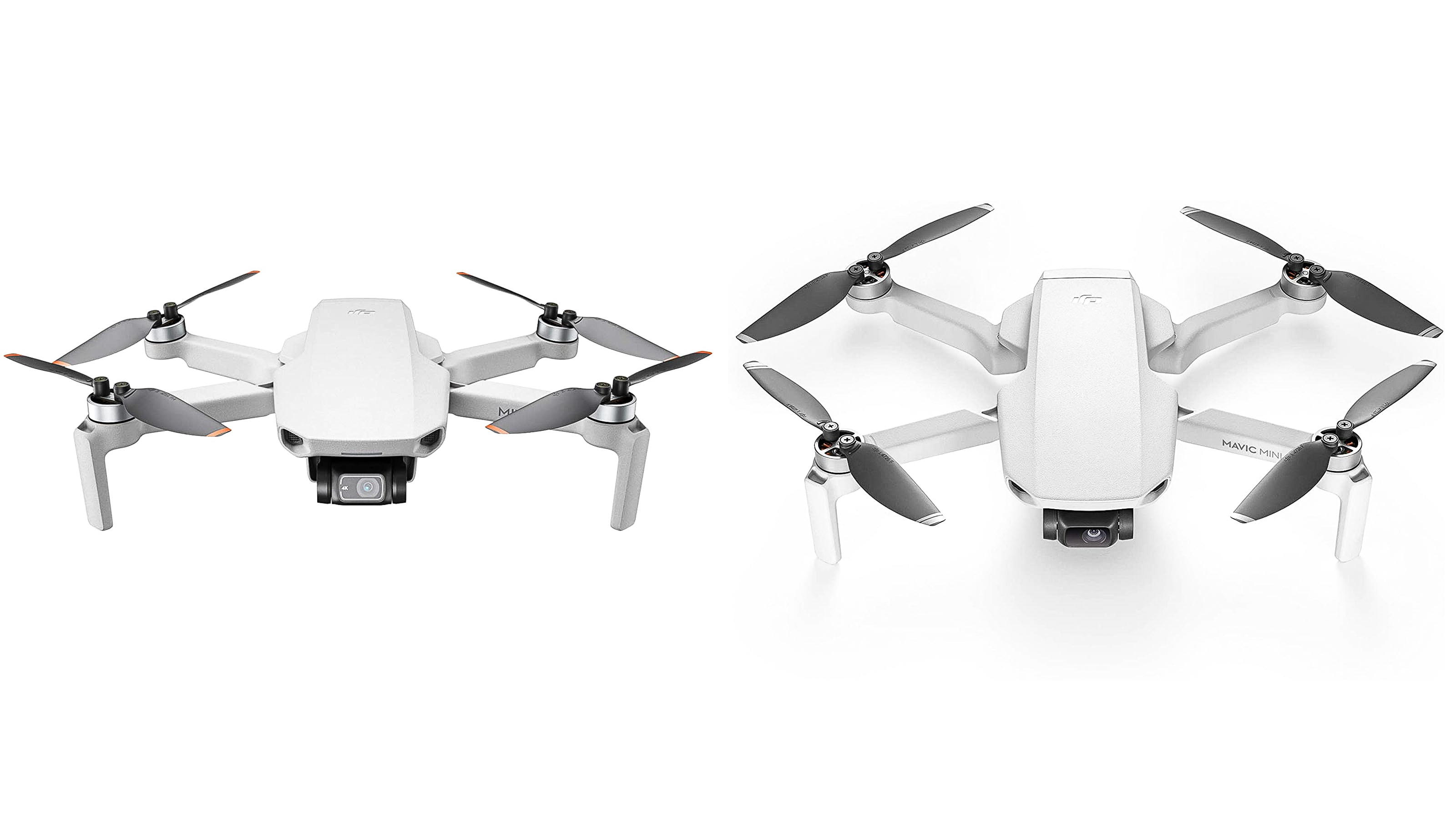
| Header Cell - Column 0 | DJI Mini 2 | DJI Mavic Mini |
|---|---|---|
| Axis | 3 (pitch, roll, yaw) | 2 (pitch, roll, yaw) |
| Tilt | -110˚ to 35˚ (-90 to +20˚ ctrl) | -110˚ to 35˚ (-90 to +20˚ ctrl) |
| Pan | -20 to 20˚ | -20 to 20˚ |
| Tilt speed | 100˚/s | 120˚/s |
A good gimbal is, more than anything, what sets a drone like this apart from the significantly cheaper toys on our Best Drones for Kids list. A low-resolution camera might still get a good result in the right hands, but the ‘hands’ in question here are fast moving and vibrating motors and a significant step toward overcoming the effect they have on the lens is achieved using a motorized gimbal.
In essence it’s an intelligent suspension tool which is constantly being moved in (in the case of both drones here) on all three axis. Tilt and roll obviously overcome the sharp angles the airframe needs to lean in order to follow the pilot’s instructions, allowing the camera to stay on target, or slowly follow along without any view-upsetting lurches. The addition of pan helps with this, and also (with very small movements of +/- 0.01˚) compensates for the vibrations
In practice there is no difference between the two gimbals on the Mini drones, though the Mini 2 does have a lower quoted tilt speed (which might make for slightly smoother pans).
DJI Mini 2 v Mavic Mini: Controller & Range
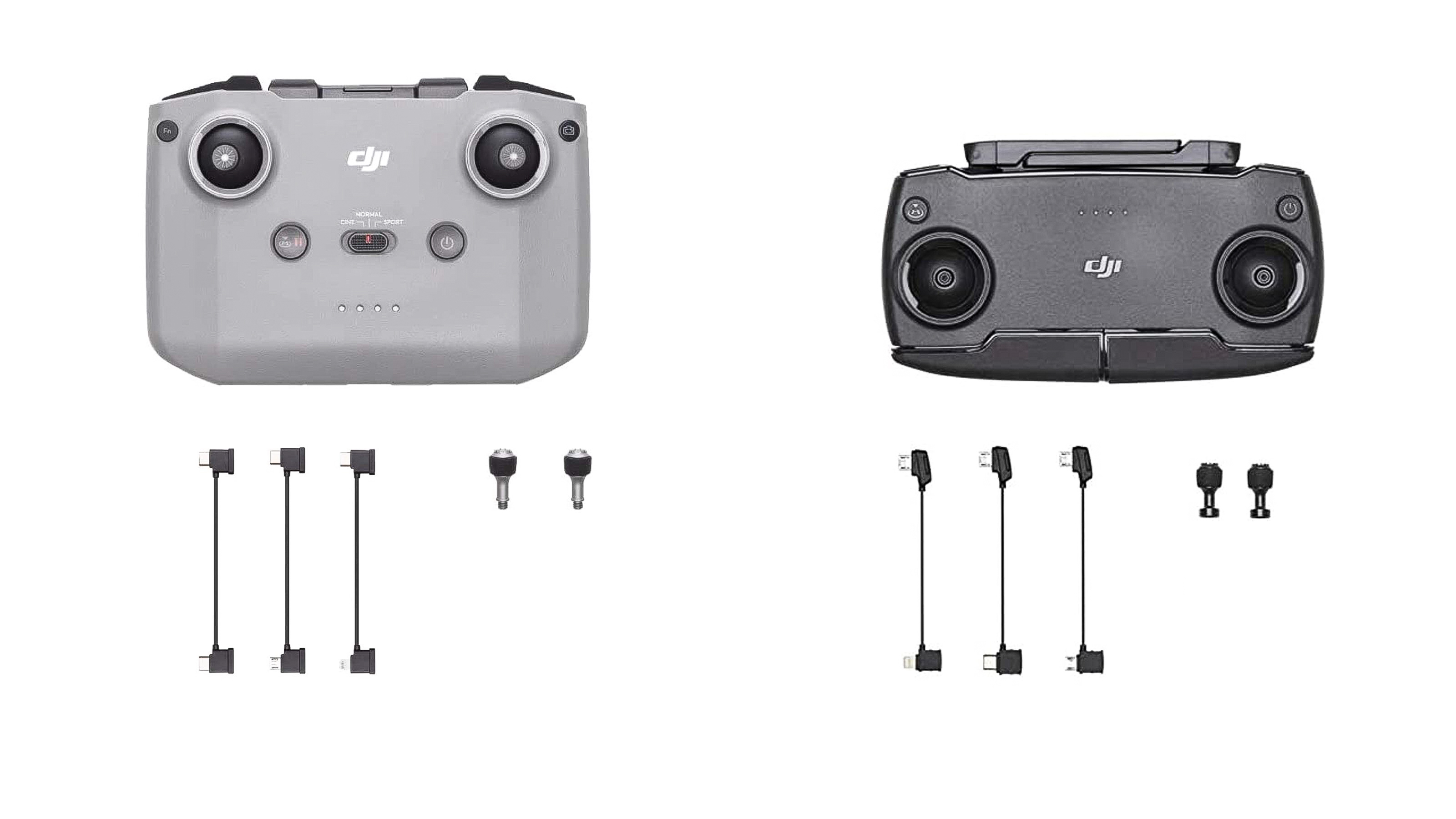
| Header Cell - Column 0 | DJI Mini 2 | DJI Mavic Mini |
|---|---|---|
| FCC (USA) Range Limit | 10km / 6.2 miles | 4000m / 2.5 miles |
| CE (UK/EU) Range Limit | 6km / 3.7 miles | 2000m / 1.25 miles |
| Battery | 5200 mAh | 2600 mAh |
| Phone Grip space / thick | 92mm wide | 160 mm long / 8.5mm thick |
| Live View Quality | 8 Mbps / 720p | 4 Mbps / 720p |
An all new controller and an upgrade to the radio system make this one of the most significant differences between the two drones. The Mini 2 has a much beefier controller, with twice the battery power. It’s physically bigger two, but that brings the boon that is a built-in cable tidy beneath the sturdy sprung phone grip, which is the more elegant solution. It can handle any height of phone, and pretty much any thickness. It also means the phone-as-monitor, when connected, is at the top of the device, meaning less travel for the eyes while piloting. (It’s also a nice touch that the control sticks aren’t cheaper plastic versions, as on the Mavic Mini).
If you’ve seen other Mavic-series controllers (except the Mavic Air 2), you’ll be familiar with the form factor. The phone is gripped from the ends by fold out arms beneath the joypad-sized body, the connection cable dangles on the left and pokes through the arm, and your phone live view screen is beneath the fold out antenna and body. In other words, the new one is a touch better, but both are high quality remote controls which are more than adequate for the task.
Where the Mini 2 really stands ahead is the technology hidden inside – OcuSync 2 – which is markedly better than the ‘Enhanced WiFi’ in the Mavic Mini. While regulations often dictate flights no further than 500 metres in practise the older Mavic mini struggles to achieve this. Conversely OcuSync 2 uses dual band technology and automatic switching and has no trouble delivering radio range significantly in excess of the distances you are allowed to fly. That's good news because even in the face of urban interference you should retain control of your aircraft and see a live view on your phone screen.
DJI Mini 2 v Mavic Mini: Still Photos
| Header Cell - Column 0 | DJI Mini 2 | DJI Mavic Mini |
|---|---|---|
| Resolution | 4000 x 3000 pixels | 4000 x 3000 pixels |
| Sensor size | 1/2.3-inch | 1/2.3-inch |
| ISO range | 100-3200 (3200 auto) | 100-3200 (1600 auto) |
| Effective focal length (EFL) | 24mm (83˚ FOV) | 24mm (83˚ FOV) |
| Formats | JPEG or DNG (Raw) | JPEG |
| Modes | Single Shot, Interval, AEB, Panorama (Sphere, 180˚ and Wide) | Single Shot, Interval |
Mechanically there is very little to separate the cameras between these drones. Both have identical 12-megapixel 1 /2.3-inch sensors and lenses with identical viewing angles; the only difference is the automatic ISO on the mini 2 can reach 3200 whereas on the Mavic mini you must invoke manual ISO to go past 1600.
Where the Mini 2 starts to pull ahead is when it comes to the output; the addition of DNG or JPEG+DNG modes mean it’s possible to capture a little more dynamic range in a single image, and take advantage of post processing – JPEG only on the Mavic Mini is somewhat restricting, leaving photography enthusiasts with but one choice. Better still Auto Exposure Bracketing (3 frames at 2/3 EV bias) and the addition of auto-stitched panoramas bring back a feature group from the Spark which didn’t make it to the Mavic Mini.
Both drones take good pictures which will lift any social media feed from the reins of gravity. The dynamic range on the Mavic Mini is a bit of a disappointment, but a side effect of the JPEG-only workflow the live view provides a pretty effective warning of any potentially blown areas of an image. The Mini 2 offers real photographers a good bit more – Raw and Exposure Bracketing – and the panoramas are of interest to content creators and social media sharing enthusiasts (and VR fans).
On top of all that is automatic photo optimization so you can download an image wirelessly to your phone, enhance it into share-friendly vivid colors with DJI’s app, then send straight from your social platform of choice. Indeed you’re often shown the pic in optimized form first with an icon to tap to return to a less saturated and contrasty alternative should you prefer.
DJI Mini 2 v Mavic Mini: Video
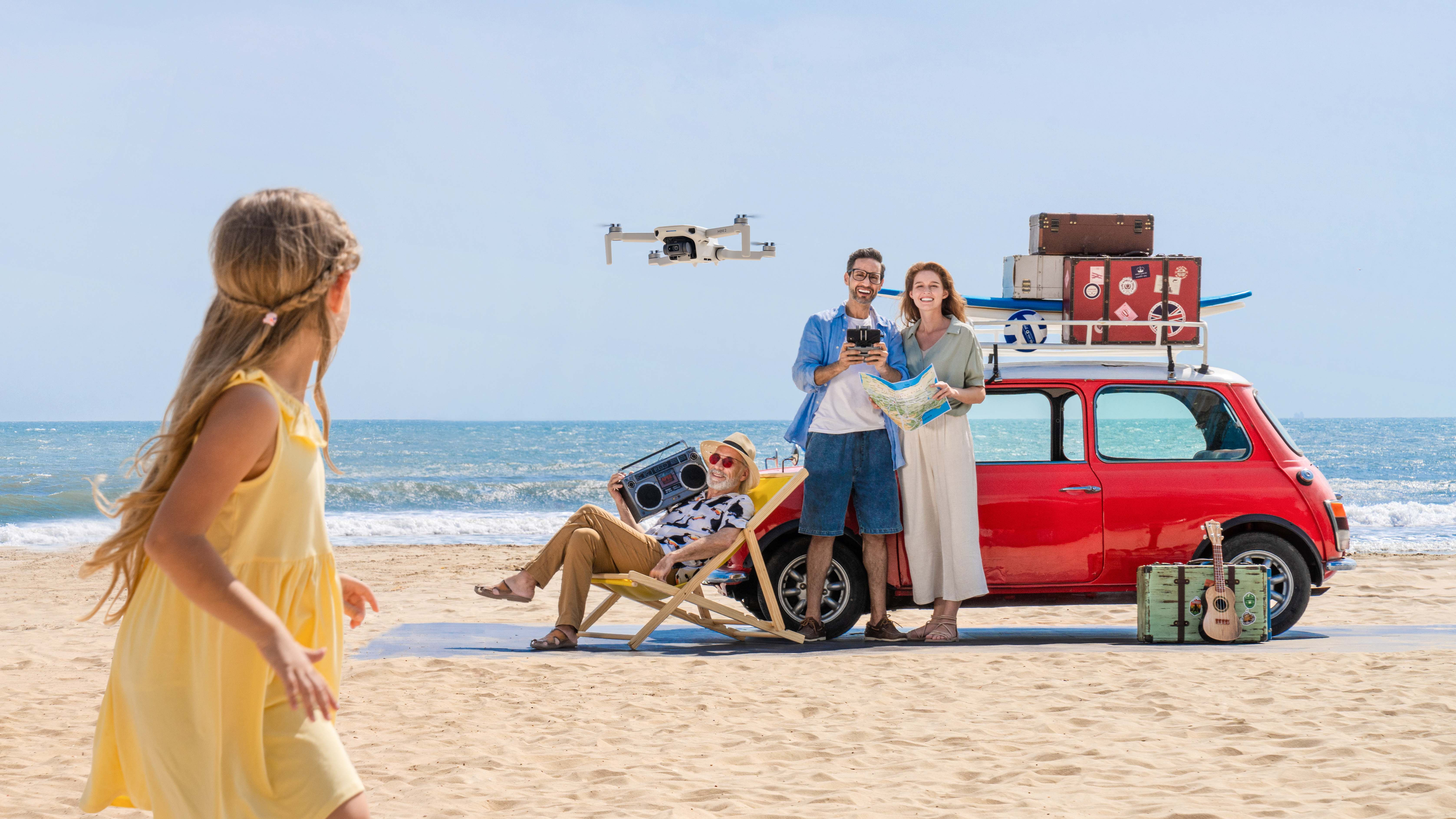
| Header Cell - Column 0 | DJI Mini 2 | DJI Mavic Mini |
|---|---|---|
| Resolution | 4K @ 30 fps / 2.7K @ 30fps / 1080P @ 60fps | 2720 x 1530 @ 30fps / 1080P @ 60fps |
| Bitrate | 100 Mbps | 40 Mbps |
| Max zoom | 4x digital | None |
If you’re shooting for YouTube, 2.7K is probably higher resolution than most of your users are using (very few people switch to 4K and the company seem in no hurry to make it an automatic increase to their server load). In fact 1080P – Full High Def (FHD) – is often good enough, and on both of these drones that comes with the advantage of being able to capture 60fps to get smooth action.
That said, 4K does feel like it should at least be an option these days, and perhaps the fact it requires a considerably higher bit-rate to record all that extra detail is a good thing whatever quality you’re editing to. In essence, I had no complaints about the resolution of the 2.7K video from the Mavic Mini, and I have to admit that the 40 Mbps still seemed to offer surprisingly good quality without being overly greedy when it came to MicroSD cards. It’s clearly better to have the choice of 4K than not, and the quality is good, though noise is an inevitable consequence in the shadier areas, and the dynamic range could be better
The addition of digital zoom is sensible – it’s hard to understand why it wasn’t on the Mavic Mini since it’s on pretty much every smart phone used as a live view monitor. Obviously it cannot create sensor pixels from nothing, so 4K zooms to a maximum of 2x, by which time the image is effectively Full HD scaled up, while if you’re actually working in Full HD, you can zoom all the way to 4x (and 2x won’t even be lossy). So, for purists it might not be very useful, but it’s still better to have it than not. Think of it as a mode for phone view, it certainly doesn’t stand up on a full-size 4K or 5K monitor.
DJI Mini 2 v Mavic Mini: Software features
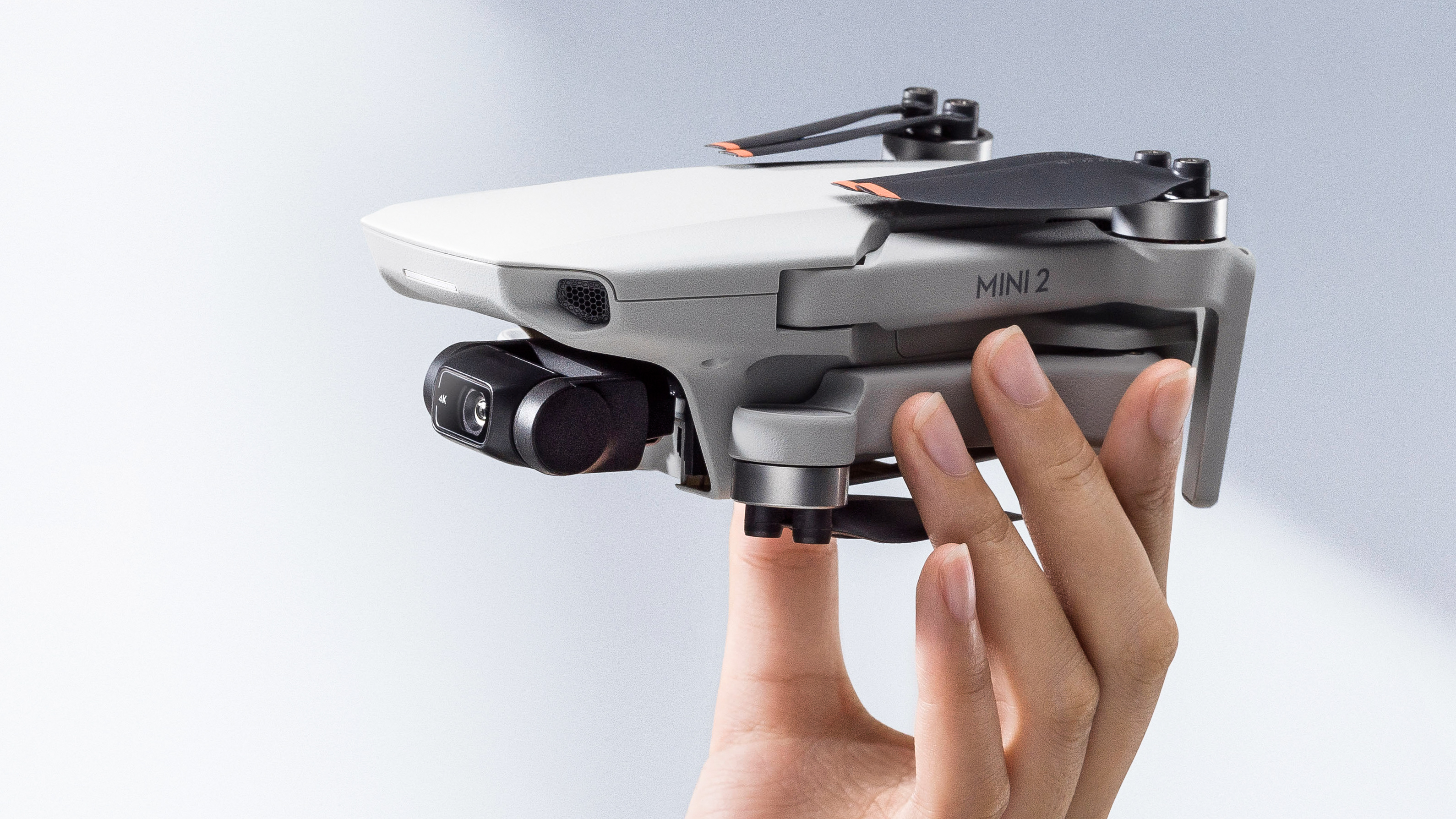
DJI Mini 2: QuickShots: Rocket, Dronie, Circle, Helix, Boomerang
DJI Mavic Mini: QuickShots: Rocket, Dronie, Circle, Helix
If you were a lover of the DJI Spark’s Jedi Mode, prepare to be disappointed. Both Mini drones have a very similar set of ‘QuickShots’, which are pre-programmed flights which capture 15-second videos which keep you, or your subject, in the centre of a captivating shot. In the words of DJI’s marketing department, “Instantly master aerial photography” and, when all goes well, it’s hard to argue that point.
The Mini 2 has the advantage, with Boomerang adding a fifth possibility (a more dramatic variant of the Circle orbit shot) to the set, and all will impress your friends and family. That said, both times I tried the Boomerang it seemed to lose track of me in the last second so perhaps it needs a software patch.
The Mini 2 also adds a bit of help to the downloading, with QuickTransfer able to pair with a nearby drone to use WiFi for faster downloading, though I’ve got to admit that I was a little disappointed – 24MB/s still isn’t that fast for full 4K video, but there are advantages to downloading via the DJI App (rather than plugging the card into the computer) when it comes to using the image and video processing features.
• See also DJI QuickShot modes explained
DJI Mini 2 v Mavic Mini: Verdict

The Mini 2 is unarguably the better drone here – it is, after all, an upgrade built on many of the same components – but there are still a couple of good reasons to pick the Mavic Mini over the Mini 2: money, and batteries. In the former case, the price difference is not nothing, especially if you’re looking at a gift for someone just starting out. Secondly, if you’re adding to a collection which already has a Mavic Mini, then the cost of replacing all the batteries is a factor.
For photographers, the Mini 2 is well worth the extra investment. The option of Raw files provide a stunning amount of detail if you have the patience to run them through a tool like Adobe Camera Raw and, while there is noise, the results still impress on many levels before they draw nit-picking. The panoramas are good too.
In terms of video, 4K does look better too, not so much than 2.7K but certainly than the 1080P which even the 2020 Mini 2 insists on reverting to for the QuickShots. Dynamic range is disappointing in video though, even on the newer model, so planning your shots (light behind you, careful use of manual exposure etc.) will have more impact than 2.7K to 4K, especially for YouTubers.
The real reasons for the extra investment are harder to see, but obvious if you’ve flown both. Even as the breeze picked up during my test, I had to remind myself the Mini 2 was a sub-250g drone – when I was flying the Mavic Mini I was a lot more worried about drift. Similarly, although in the UK my testing range is limited to 500m, that was enough to expose problems with the 2019 Mavic Mini’s signal, but not a moment’s issue with the Mini 2.
Ultimately, then, I’d recommend a little caution around some of the hype of the Mini 2 – at this weight the drone still isn’t as robust in the air as those that do need registering, and the zoom falls well short of higher resolution or optical systems – but it’s still a significant step up, and a brilliant drone at this price – and it still comes in under that all-important 0.55lb weight.
Get the Digital Camera World Newsletter
The best camera deals, reviews, product advice, and unmissable photography news, direct to your inbox!

With over 20 years of expertise as a tech journalist, Adam brings a wealth of knowledge across a vast number of product categories, including timelapse cameras, home security cameras, NVR cameras, photography books, webcams, 3D printers and 3D scanners, borescopes, radar detectors… and, above all, drones.
Adam is our resident expert on all aspects of camera drones and drone photography, from buying guides on the best choices for aerial photographers of all ability levels to the latest rules and regulations on piloting drones.
He is the author of a number of books including The Complete Guide to Drones, The Smart Smart Home Handbook, 101 Tips for DSLR Video and The Drone Pilot's Handbook.
